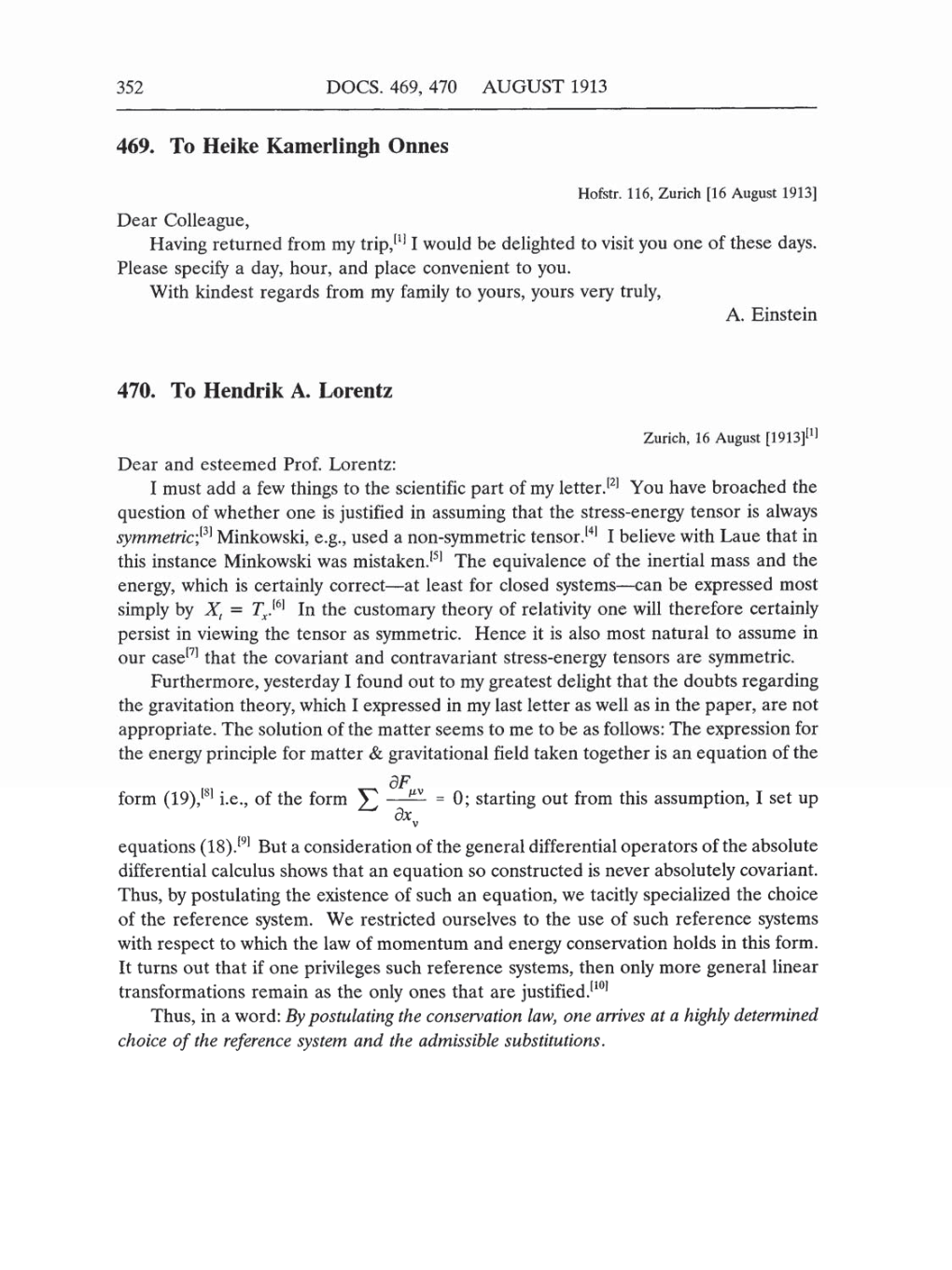352
DOCS.
469,
470
AUGUST
1913
469. To
Heike
Kamerlingh
Onnes
Hofstr.
116,
Zurich
[16
August 1913]
Dear
Colleague,
Having
returned
from
my
trip,[1]
I
would be
delighted to
visit
you
one
of these
days.
Please
specify
a
day,
hour,
and
place
convenient
to
you.
With
kindest
regards
from
my family
to
yours,
yours very truly,
A.
Einstein
470. To
Hendrik
A.
Lorentz
Zurich, 16 August
[1913][1]
Dear and esteemed
Prof.
Lorentz:
I must
add
a
few
things
to
the
scientific
part
of
my
letter.[2]
You have
broached
the
question
of whether
one
is
justified
in
assuming
that the
stress-energy
tensor
is
always
symmetric;[3]
Minkowski,
e.g.,
used
a non-symmetric
tensor.[4]
I believe with
Laue that
in
this
instance
Minkowski
was
mistaken.[5]
The
equivalence
of the inertial
mass
and
the
energy,
which
is certainly
correct-at
least for
closed systems-can
be
expressed
most
simply by
Xt
=
Tx.[6]
In the
customary theory
of
relativity
one
will
therefore
certainly
persist
in
viewing
the
tensor
as symmetric.
Hence
it
is
also most
natural
to
assume
in
our
case[7]
that the covariant and contravariant
stress-energy
tensors
are symmetric.
Furthermore,
yesterday
I
found
out to
my greatest delight
that the doubts
regarding
the
gravitation theory,
which
I expressed
in
my
last
letter
as
well
as
in
the
paper,
are
not
appropriate.
The solution of
the matter
seems
to
me
to
be
as
follows:
The
expression
for
the
energy principle
for matter
& gravitational
field
taken
together is
an
equation
of the
dF
form
(19),[8]
i.e.,
of the
form
^
Fuv-dxv-
=
0;
starting out
from this
assumption,
I
set
up
equations
(18).[9]
But
a
consideration of
the
general
differential
operators
of the
absolute
differential
calculus shows
that
an
equation
so
constructed
is
never
absolutely
covariant.
Thus,
by
postulating
the
existence
of
such
an equation, we
tacitly specialized
the
choice
of the reference
system.
We
restricted
ourselves to
the
use
of
such
reference
systems
with
respect to
which
the
law of momentum
and
energy
conservation holds in this form.
It
turns out
that
if
one
privileges
such
reference
systems,
then
only more
general
linear
transformations remain
as
the
only ones
that
are justified.[10]
Thus,
in
a
word:
By
postulating
the conservation
law,
one
arrives
at
a
highly
determined
choice
of
the
reference system
and
the admissible substitutions.
